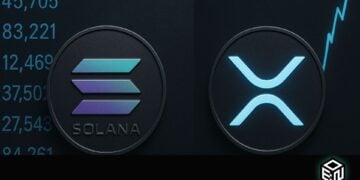Mining Ether, a once profitable business, is no longer an option. After the network officially transitioned from proof of work (PoW) to a proof of stake (PoS) protocol, the world’s largest mining pool – Ethermine, shut down. At the time of writing, the company’s website homepage shows zero miners, zero workers, and an active hash rate of zero.
Ether Mining Industry
Mining ETH was a multibillion-dollar industry with an estimated value of $19 billion. At one point, about 1 million individuals were mining Ether using home-based equipment and in specialized facilities. One core implication of Ethereum 2.0 is that investors staking Ether (ETH) have replaced the role of graphics processing units (GPUs) for validating transactions. Ethereum was initially a proof of work blockchain, like Bitcoin, which requires powerful computers to process and “mine” blocks for validating transaction data on the network.
According to researcher Digiconomist, a single Ethereum transaction consumed as much energy as a typical US household uses in a week. This is because the PoW process requires a tremendous amount of computing power and, thus, energy. It is leading to massive speculation about the scalability of such blockchains and criticism surrounding their potential environmental impact.
Post Merge Scenario
On September 15, Ethereum founder Vitalik Buterin tweeted, “Happy merge all; the Ethereum ecosystem is experiencing a major turning point at this time.” Validators are replacing all Ether miners. After the long-awaited network upgrade, miners everywhere are shutting down their servers or transitioning to mining other (less profitable) cryptocurrencies. Some are also speculating whether or not miners will transition to Bitcoin rather than alt-coins or abandon operations altogether.
Ethermine’s particular path forward as a company has been to payout any miners with unpaid balances a few days following the Merge. Last month, Ethermine also created an Ethereum staking pool where cryptocurrency owners can deposit their coins and receive rewards. At the time of writing, the invested balance is $977,247.85 with 660 invested Ether, and the current price of Ether is $1,471.20.
Looking farther into the future possibilities for Ethereum, the network upgrade to proof of stake may make it more attractive to institutions. Leading some of the top thought leaders and influencers in the crypto community to speculate that Ethereum’s total market cap could overtake that of Bitcoin in the coming year or years. The idea that Ethereum will eventually overtake Bitcoin in market share and volume is colloquially called “the flippening.”
These speculations tend to be founded on the perception that Ethereum is the most widely used, adopted, and accessible blockchain network. This is why some business leaders, like Mark Cuban, are publicly self-proclaimed “Ethereum Maximalists.” Market conditions have been in favor of Ethereum. Throughout May and leading up to the Merge this year, Ethereum has been consistently outperforming Bitcoin. Richard Usher from BCB Group London stated that ETH would likely continue to outperform the whole crypto market for some time due to the switch to PoS.
Conclusion
The Ethereum Foundation claims the Merge will reduce the network’s energy consumption by up to 99.95%. It is making the upgrade a more socially and environmentally attractive blockchain to individuals and institutions. However, it has only been a matter of days since the transition, and time will be the real determining factor for the effectiveness and outcomes of Ethereum 2.0.
A final note for those readers who wish to learn more about the technical differences between Proof of Work and Proof of Stake, read this article published in the International Journal for Research in Applied Science & Engineering Technology.














